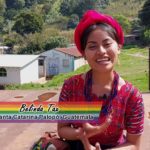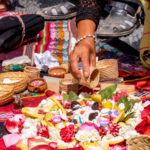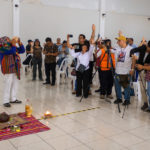The Amazon biome is a vast tropical rainforest that covers much of South America, including Brazil, Peru, Colombia, and parts of other neighboring countries. The Amazon rainforest is one of the most biodiverse regions on the planet, with millions of plant and animal species living in its dense vegetation.
The indigenous people of the Amazon have a long and complex history, dating back thousands of years. These communities have developed unique cultures, languages, and ways of life, often centered around hunting, fishing, and agriculture.
However, the arrival of European colonizers in the 16th century had a devastating impact on the indigenous communities of the Amazon. Disease, forced labor, and land expropriation led to the decimation of many tribes, and their cultures and traditions were often lost or eroded.
Despite this history of oppression, many indigenous communities have persevered and continue to live in the Amazon rainforest today. These communities have faced ongoing challenges in protecting their land and resources from external threats, such as deforestation, mining, and oil exploration.
In recent years, there has been increased international attention on the plight of the Amazon rainforest and its indigenous communities. Activists and advocacy groups have called for greater protections and support for these communities, and there have been some successes in securing legal recognition of indigenous land rights and limiting destructive activities in the region.
- Let’s Take Care of the Environment
 by EAC AdministratorBelinda Tax is a former representative of the municipality of Santa Catarina Palopó in the department of Sololá, Guatemala. She sends us a message in Kaqchikel and Spanish to take care of the environment. https://youtu.be/9nn8pljAkT0 HOME CENTRAL AMERICA
by EAC AdministratorBelinda Tax is a former representative of the municipality of Santa Catarina Palopó in the department of Sololá, Guatemala. She sends us a message in Kaqchikel and Spanish to take care of the environment. https://youtu.be/9nn8pljAkT0 HOME CENTRAL AMERICA - The Danger of Genetically Modified Seeds
 by EAC AdministratorIn Guatemala, there are international companies promoting genetically modified seeds, which represents a great threat to the country’s biodiversity. Other entrepreneurs are opting for monoculture, which also poses a threat to forests and the crops of indigenous peoples. The National Network for the Defense of Food Sovereignty in Guatemala is joining efforts with ancestral authorities […]
by EAC AdministratorIn Guatemala, there are international companies promoting genetically modified seeds, which represents a great threat to the country’s biodiversity. Other entrepreneurs are opting for monoculture, which also poses a threat to forests and the crops of indigenous peoples. The National Network for the Defense of Food Sovereignty in Guatemala is joining efforts with ancestral authorities […] - PACHA PUQUY KILLA 2023
 by EAC AdministratorMarch 21th, 2023 Photographs: Yoselin Rondan Previous Next Pacha Puquy Killa Festival The autumn equinox is not only a change of season, but the passage from feminine time to masculine time, the passage to the great maturation of the fruits of the nurturing of life, also known as the Pacha Puquy Killa. The celebration at […]
by EAC AdministratorMarch 21th, 2023 Photographs: Yoselin Rondan Previous Next Pacha Puquy Killa Festival The autumn equinox is not only a change of season, but the passage from feminine time to masculine time, the passage to the great maturation of the fruits of the nurturing of life, also known as the Pacha Puquy Killa. The celebration at […] - Qhapaq Inti Rayma: An Ancestral Celebration
 by EAC AdministratorThursday, December 22, 2022 Lima, Peru Previous Next Travelers gather at the Oracle of Pachakamaq On December 21, the summer solstice occurred in the southern hemisphere, marking the beginning of the summer season. It is a day when the greatest difference in duration between day and night occurs, and sunlight illuminates the Earth in such […]
by EAC AdministratorThursday, December 22, 2022 Lima, Peru Previous Next Travelers gather at the Oracle of Pachakamaq On December 21, the summer solstice occurred in the southern hemisphere, marking the beginning of the summer season. It is a day when the greatest difference in duration between day and night occurs, and sunlight illuminates the Earth in such […] - UNMSM Celebrates Inti Raymi 2022
 by EAC AdministratorFriday, July 01, 2022 Lima, Peru Photographs: Yoselin Rondan Reyes Previous Next Inti Raymi ceremony held at the National University of San Marcos Inti Raymi is one of the most important ancestral ceremonies in honor of Tayta Inti, where the return of the sun, the rebirth of nature, and the beginning of a new stage […]
by EAC AdministratorFriday, July 01, 2022 Lima, Peru Photographs: Yoselin Rondan Reyes Previous Next Inti Raymi ceremony held at the National University of San Marcos Inti Raymi is one of the most important ancestral ceremonies in honor of Tayta Inti, where the return of the sun, the rebirth of nature, and the beginning of a new stage […] - Homage to Kurakas Tawlichuko, Kaxapaxa And Ñusta Asarpay in Rimaq Marka
 by EAC AdministratorMonday, March 07th, 2023 Lima, Peru Previous Next The indigenous peoples of Peru who reside in the capital, Lima (Rimaq Marka: People who speak), have organized themselves in the Tawantinsuyu Kamachiq of Rimaq Marka, which is the Great ancestral council made up of Yachaq (wise grandparents or native priests), the hamawtas (possessors of ancestral knowledge), […]
by EAC AdministratorMonday, March 07th, 2023 Lima, Peru Previous Next The indigenous peoples of Peru who reside in the capital, Lima (Rimaq Marka: People who speak), have organized themselves in the Tawantinsuyu Kamachiq of Rimaq Marka, which is the Great ancestral council made up of Yachaq (wise grandparents or native priests), the hamawtas (possessors of ancestral knowledge), […] - Change of Ancestral Authorities in San José Poaquil
 by EAC AdministratorTuesday, January 17th, 2023 San José Poaquil, Guatemala On December 21, 2022, a change of ancestral authorities took place in the municipality of San José Poaquil in the department of Chimaltenango, Guatemala. Tat Cristobal Cojtí García, the Indigenous Mayor of Tecpán Guatemala, and a Counselor of the Great Council of the Eagle and the Condor […]
by EAC AdministratorTuesday, January 17th, 2023 San José Poaquil, Guatemala On December 21, 2022, a change of ancestral authorities took place in the municipality of San José Poaquil in the department of Chimaltenango, Guatemala. Tat Cristobal Cojtí García, the Indigenous Mayor of Tecpán Guatemala, and a Counselor of the Great Council of the Eagle and the Condor […] - COP 27 Experience in Dahab, Egypt
 by EAC AdministratorWednesday, March 09th, 2023 Dahab, Egypt The Cultural COP was an incredible experience that enriched my life on so many levels. I was amazed by the EarthRise Initiative, which brought together similar messages from all the participants in the group. Respectful listening, ceremony, and sharing created a mechanism of truth that strengthened the movement of […]
by EAC AdministratorWednesday, March 09th, 2023 Dahab, Egypt The Cultural COP was an incredible experience that enriched my life on so many levels. I was amazed by the EarthRise Initiative, which brought together similar messages from all the participants in the group. Respectful listening, ceremony, and sharing created a mechanism of truth that strengthened the movement of […] - Tribute to the Fallen Brothers in Protests
 by EAC AdministratorThursday, January 12, 2023 Lima, Perú Previous Next Ancestral ceremony performed by the elders of Rimaq Marka The Elderly members of the Rimaq Marka community held an ancestral ceremony to pay tribute to the brothers who fell during the protests that began last December (2022) in all regions of Peru, in which all protesters demand […]
by EAC AdministratorThursday, January 12, 2023 Lima, Perú Previous Next Ancestral ceremony performed by the elders of Rimaq Marka The Elderly members of the Rimaq Marka community held an ancestral ceremony to pay tribute to the brothers who fell during the protests that began last December (2022) in all regions of Peru, in which all protesters demand […]
